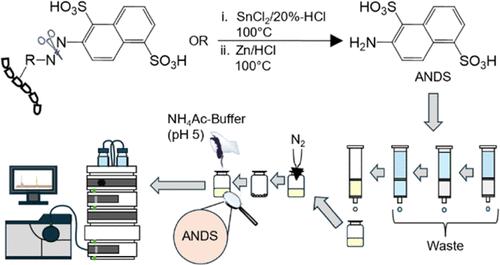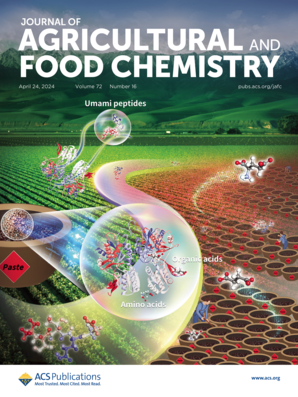Determination of Reactive Dyes in Coloring Foodstuff, Fruit Juice Concentrates, and Meat Products by Reductive Azo-Bond Cleavage and LC-ESI-MS/MS Analysis
IF 5.7
1区 农林科学
Q1 AGRICULTURE, MULTIDISCIPLINARY
引用次数: 0
Abstract
Visually appealing foods are often associated by consumers with subjective quality features, such as freshness, palatability, and shelf life. In the past, there have been repeated violations in which regulations on the use of pigments in food were ignored and/or unauthorized or toxic dyes (e.g., Sudan red in paprika powder) were added. Most recently, adulterations by using reactive dyes from the textile sector have been reported. These included, among others, colored spice preparations for use in meat products (e.g., for sausages and meat products), which were advertised to contain natural plant-derived pigments mainly consisting of betalains and/or anthocyanins. In contrast to natural dyes, reactive dyes are very stable toward extreme pH values, heat, and light. Due to their chemical properties, reactive dyes cannot be detected by classical dye analysis as they may be covalently bound to the food matrix. Methods for the analysis of matrix-bound reactive dyes are therefore required. In this study, a reductive cleavage method of bound textile dyes in different food matrices (spice mixtures, fruit juices, and scalded sausages) and the detection of characteristic cleavage products after enrichment by solid phase extraction (SPE) and liquid chromatography-electrospray ionization-tandem mass spectrometric (LC-ESI-MS/MS) analysis is reported. In addition, 13 suspicious samples provided by project partners were analyzed using the newly developed LC-ESI-MS method.

求助全文
约1分钟内获得全文
求助全文
来源期刊
CiteScore
9.90
自引率
8.20%
发文量
1375
审稿时长
2.3 months
期刊介绍:
The Journal of Agricultural and Food Chemistry publishes high-quality, cutting edge original research representing complete studies and research advances dealing with the chemistry and biochemistry of agriculture and food. The Journal also encourages papers with chemistry and/or biochemistry as a major component combined with biological/sensory/nutritional/toxicological evaluation related to agriculture and/or food.

 求助内容:
求助内容: 应助结果提醒方式:
应助结果提醒方式:


